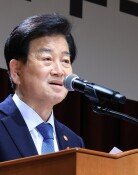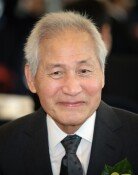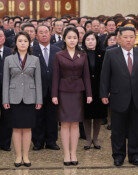Manufacturing slowdown dims Korea’s economic outlook
Manufacturing slowdown dims Korea’s economic outlook
Posted May. 21, 2025 07:20,
Updated May. 21, 2025 07:20
South Korea's industrial electricity consumption fell for the second consecutive year in 2023 and 2024, marking the first such decline except for the COVID-19 period since records began in 1999. This signals a severe downturn in manufacturing, driven by intensifying global competition from Chinese goods and deepening domestic demand contraction. Even next-generation growth engines like electric vehicle batteries are sinking further amid fears of U.S. tariffs under the Donald Trump administration.
According to Korea Electric Power Corp., industrial power sales fell by 1.9 percent in 2023 and by another 1.5 percent in 2024. Power consumption, a key real-economy indicator, reflects the deteriorating state of manufacturing activity. As the world’s sixth-largest manufacturing powerhouse, Korea relies heavily on electricity-intensive sectors such as steel, petrochemicals, semiconductors, and automobiles. As industrial electricity rates have surged by 70 percent over the past two years and incoming orders have declined, many manufacturers are turning off factory lights and suspending operations.
Domestic steel and petrochemical firms, reeling from China’s dumping offensive, have been scaling back operations or closing plants. Since last month, U.S. tariffs on automobiles and parts have led to a sharp production cut among small and mid-sized Korean suppliers. In the first quarter of 2025, industrial electricity sales dropped by 3.6 percent year-on-year, raising the likelihood of a third straight year of decline.
To make matters worse, prospects for future industries are worsening. In March, Korean battery makers fell behind their Chinese rivals in global market share (excluding China), with Korea at 40.3 percent and China at 42 percent. Korean companies, hit by waning EV demand and mounting losses, are staying afloat by taking on debt. In contrast, China’s CATL is posting profits, backed by strong domestic demand, and is ramping up capital for aggressive expansion into Europe and beyond.
With sluggish domestic consumption dragging down GDP growth, export-driven manufacturing remains Korea’s only reliable growth engine. The country’s manufacturing employment ratio has dropped to 15.5 percent, down from over 20 percent in the 1990s. Structural reform through mergers and acquisitions should be expedited in nonviable sectors. For strategically important industries, the government must not hesitate to offer targeted support, whether through subsidies or adjustments to electricity pricing, to help them survive the current downturn and emerge stronger.





![“나 도시락이야”…경찰도 못 연 문이 열렸다 [따만사]](https://dimg.donga.com/c/138/175/90/1/wps/NEWS/IMAGE/2026/01/01/133077778.1.jpg)

